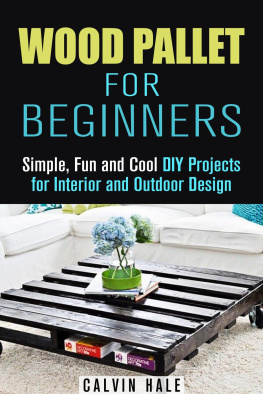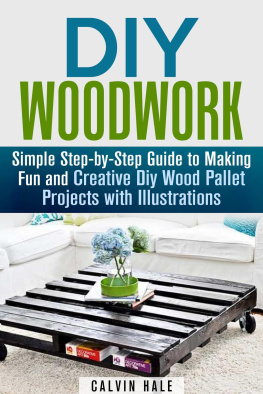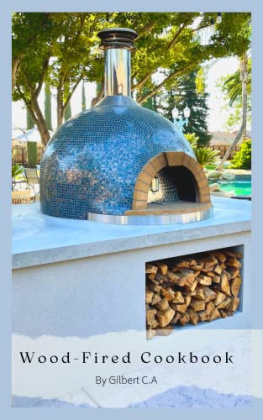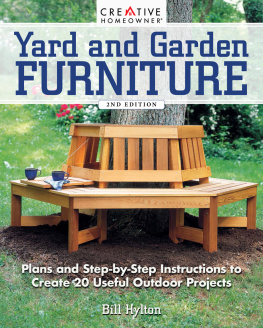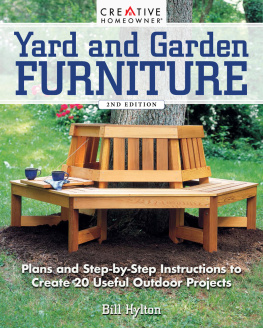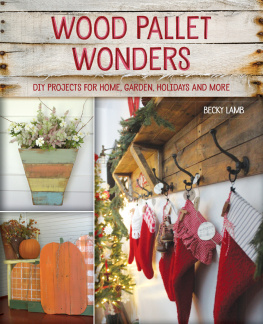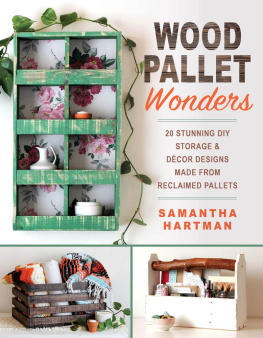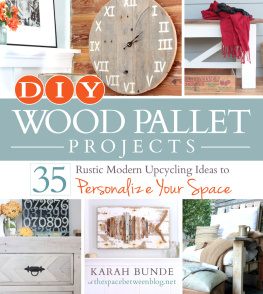Wood Pallet for Beginners
Simple, Fun and Cool DIY Projects for Interior and Outdoor Design
Copyright Notice
Reproduction, duplication, transmission of this document in part or in whole is permitted only with written permission from the publisher. All rights reserved.
Respective brands and trademarks mentioned in this book belong to their respective owners.
Disclaimer
This document is geared towards providing summarization of information related to the topic. While all attempts have been made to verify the accuracy of the information, the author does not assume any responsibility for errors, omissions, or interpretations of the content. The information is offered for informational or entertainment purposes only. If professional advice is necessary, a qualified legal, medical, financial or another respective professional should be consulted. The reader is responsible for his or her own actions. The publisher does not accept any responsibility or liability arising from damages or losses, real or perceived, direct or indirect, resulting from the use of this information.
Table of Contents
Introduction
Y esterday a semi carrying a load of pallets turns over in your front yard, and the insurance adjuster after writing you a check for the damages tells you to enjoy the pallets, they are yours now. So after discussing his heritage, (In particular the morals of his mother, because he is one son of a something after all), you decide to make lemonade out lemons and recycle all of these pallets into wood furniture and objects you can sell for money.
This book is all about that, in that we are going to see what we can do with wood pallets besides pile them in a big heap toss lots of gas on it and roast marshmallows and hot dogs. To do this, you do not need a workshop to rival those you see on TV, but you will need a power drill, a small cutter/grinder, a set of screwdrivers, a set of chisels and a grinding wheel to keep them sharp, a sanding disc for either the drill, (Preferred), the cutter, or both, (The best option). You will also need a hammer, a file, drill bits, paint brushes, paint, sealers, wood putty and finishes.
As with all books of this sort, you the reader are responsible for what you do. This book can only guide you in some ideas and it is up to you to see if you are comfortable do or not doing it. To help in deciding this we recommend that you first prototype your projects on sheets of plain white paper, and if viable, creating templates from this with construction paper which you can use to mark out your cuts on the wood. By doing this you can see if your idea will work or not work. Ready to begin?
Chapter One: What is a Pallet?
I n this chapter you will learn:
- How a pallet is made
- Standard size of a pallet
- Why pallets are chamfered and holes cut in them
As you looked out in your yard after the semi has left you some Presents in your front yard and you are curious as to what they are all about. A pallet is a container used to hold other containers. That may sound strange, but a pallet is a collects of wood or plastic pieces that allow a forklift or pallet jack to grab hold of lots of cartons, bottles, or bins as a group instead of each separately.
To do this, pallets are designed so that they can take a very heavy load on their top and not so much on the sides. Pallets come in many sizes, but they are usually rectangular in shape, (Though may be squares or even round in shape), but the standard size is 48 inches by 40 inches in length. For our book, we are going with the 48 x 40-inch standard pallet.
To make this pallet they take 2 40 inch pieces of wood known as a bottom stringer and these are spaced so the outsides of them are 48 inch apart. To this they nail, brad or screw three 48 inch pieces of wood that have arches cut in them that go from two inches from the outside edge until two inches from the middle and go higher than halfway into the wood. These pieces then form the bottom for 6 40 inch pieces of wood to be screwed, nailed or braided onto them so you have a platform that while have some space in between the planks, you have this device or unit that can take a very heavy load without breaking. To make loading easier, the outsides are chamfered with a rounding over bit so there is no hard edge for a load to catch on and therefore spill. You are probably wondering while the holes were cut in those three pieces? That is so the pallet can be grabbed from any side as you have natural holes created sideways by the three pieces, and two holes due to the arches in the wood.
Chapter Two: What Kind of Wood is Used
I n this chapter you will learn:
- The different types of woods used
- What is heat treated wood
- What is chemically treated wood
- What wood must stay outdoors
- What wood is indoors wood and food safety wood
- What is pressboard
- What is plywood
We are looking at all those pallets now sitting in your front yard, and you are curious what type of wood are they made of, where can I use it, and are there safety issues with the wood even if it is your intent to bring out the gas, marshmallows, and hot dogs. This is what this chapter is all about, and by the end of this chapter, you will be able to look at a pallet and know based on the wood, what to do with it.
Pallets come in two basic types of whole wood. The biggest in usage is Pine. This pine is milled into planks and then boards and then the boards are dried to remove all the excess water in it before it is used as a pallet. Pine is very cheap in cost, has good breakage strength and is loaded with knots. These knots can cause holes in the wood, or wood that is normally white, with dark circles.
The other whole wood used is Oak. The Oak used is normally graded as not for retail or finish, which means too many knots, (Thought these knots stay with the wood), or showing separated grains or fibers in the wood. Oak as a rule is expensive, but this is considered almost a waste material to the lumber mills and therefore used in pallets.
All wood is dried in a kiln to reduce the moisture content and heat treated wood takes this one step further. In the kiln they raise the temperature of the wood to about 140 degrees and this kills all insects, germs and viruses. This process makes the wood super hard and dense as heat contracts the wood. Heat treated is quite safe for use in making food utensils and dishes. A pallet with heat treated wood will have a stamp marked HT somewhere on the wood board.
The exact opposite is chemically treated wood. This wood is put in a pressure container similar to a sterilizer, except instead of boiled water, they use a mix of chemically that go through the wood. The wood is then kiln dried and marked with a HB. This wood cannot used indoors as it does give off a small amount of these chemicals that over time will travel to all animals in the area. The chemicals are there to preserve the wood and to kill off any insects in the wood. This wood also is unsafe for any food use as the chemicals will leech from the wood into the food.
There are two other woods used in pallets but unlike the oak and pine, they are not cut from the tree as a board. These are pressboard and plywood, and both involve some manufacturing processes. Pressboard is made from sawdust, wood chips, and glue. They are combined into a mix and pressed under very high pressure into boards. Pressboard is very sturdy, but has no patina or knots or variance in the wood. A good example of pressboard is any furniture you have assembled from a kit.
Plywood is made in a similar fashion to pressboard except that thin strips of wood are layered on top of each other with the grains of the wood alternating between the sheets. This makes the wood very strong but it leaves a pattern of what appears to be a very rough wood. Some plywood is used in finished furniture, but most is used in more industrial organizations, (Like your local construction site). While pressboard could possibly be used in a food application, plywood is definitely not for food use.
Next page
